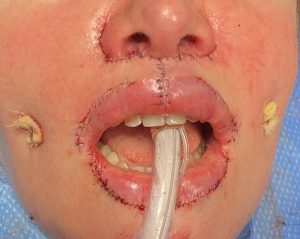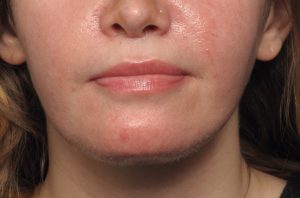Overview
Aesthetic lip reshaping can be achieved through a variety of excisional surgical techniques, each offering permanent changes in lip form by removing targeted tissue. The most common of these is the subnasal or bullhorn lip lift, which enhances central upper lip fullness by removing tissue beneath the nose. While other techniques—such as vermilion advancements, corner mouth lifts, and mouth widening procedures—are less frequently performed, they play valuable roles in refining lip aesthetics.
Despite their differences, these procedures share a common characteristic: they all require tissue excision, leading to fine line scars as a tradeoff for permanent improvement.
Combination Approach to Lip Reshaping
While these surgeries are often performed individually, strategic combinations can amplify aesthetic outcomes. A particularly effective pairing in my practice involves a subnasal lip lift combined with lateral vermilion advancements. This synergistic approach allows for upper lip enhancement that extends to the sides—an area the subnasal lift alone cannot fully address.
Another unifying element among these procedures is their horizontal orientation, which ensures that scars fall along natural structural interfaces like the vermilion-cutaneous border or nasal-lip junction. This makes them fundamentally 2D reshaping techniques, ideal for the majority of patients.
A Rare Indication for Vertical Lip Excision
In select cases, vertical excision can be employed for aesthetic purposes. Typically associated with reconstructive efforts following tumor removal, vertical lip reductions are seldom used cosmetically. However, in patients with a wide prolabial segment—specifically, excessive spacing between the philtral columns—a vertical excision can effectively narrow this width.
Patient Case
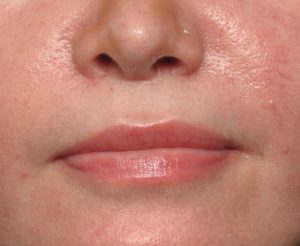
-
Desire for increased upper and lower vermilion show and lip volume
-
Reduction in the nose-to-lip distance
-
Narrowing of the philtral column spacing
-
Improved nasal base projection (i.e., a more open nasolabial angle)
She had previously undergone a subnasal lip lift and also desired chin and cheek dimple enhancements, though these are beyond the scope of this case study.
Surgical Plan
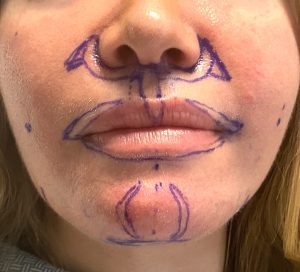
-
Upper lip lateral vermilion advancement
-
Lower lip advancement
-
Extended subnasal lip lift with vertical prolabial excision
-
Premaxillary augmentation using a custom-reduced ePTFE implant, inserted beneath the nasal spine through a re-opened nasal base incision
-
Chin and cheek procedures (not detailed here)
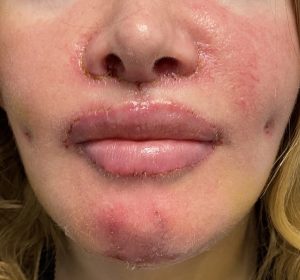
Results and Long-Term Outcome
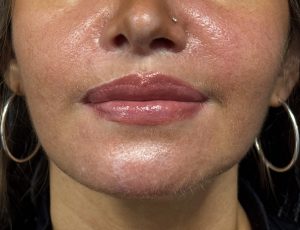
-
No significant scarring or lip shape concerns
-
A well-concealed midline upper lip scar
-
Substantially narrowed philtral column spacing—from a width spanning the nostrils to one matching the columella
This case stands out for its comprehensive use of all available excisional lip techniques, executed in a single surgery. The vertical reduction of the philtral distance is especially rare, and was indicated only due to the patient’s unusually wide prolabial segment.
Key Takeaways
-
Multiple excisional techniques exist for permanent lip reshaping, each with a tradeoff of fine line scarring.
-
Combinatory approaches, as seen in this case, can yield dramatic yet harmonious results.
-
Vertical lip excision, though rare, is a valuable tool in cases of excessive philtral width—with minimal visible scarring when performed judiciously.
By Dr. Barry Eppley
World-Renowned Plastic Surgeon

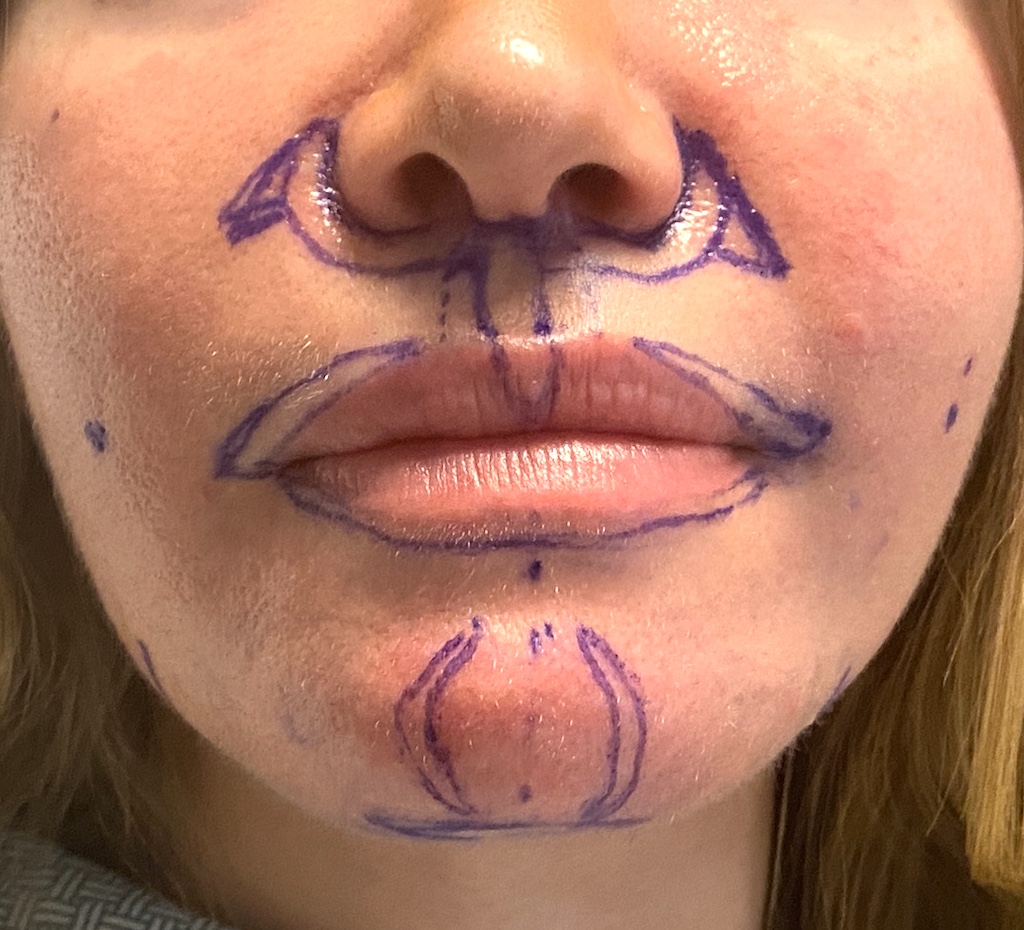
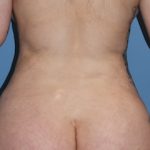
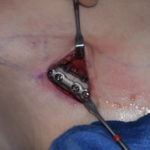
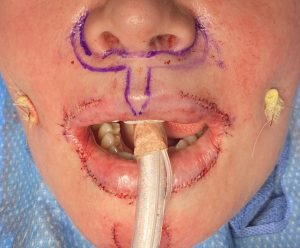 Upper lip lateral vermilion advancement
Upper lip lateral vermilion advancement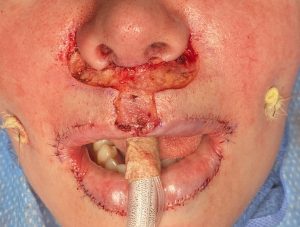 Extended subnasal lip lift with vertical prolabial excision
Extended subnasal lip lift with vertical prolabial excision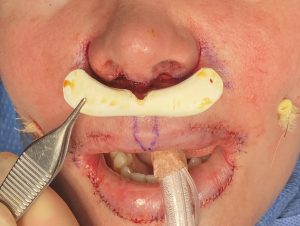 Premaxillary augmentation using a custom-reduced ePTFE implant, inserted beneath the nasal spine through a re-opened nasal base incision
Premaxillary augmentation using a custom-reduced ePTFE implant, inserted beneath the nasal spine through a re-opened nasal base incision